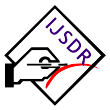Imp Links for Author
Imp Links for Reviewer
Research Area
Subscribe IJSDR
Visitor Counter
Copyright Infringement Claims
Indexing Partner
|
Published Paper Details
|
|
| Paper Title: | Basic Principles of (QSAR) Quantitative Structure Activity Relationship and its methods |
| Authors Name: | Rohit Dnyaneshwar Chaudhari |
| Unique Id: | IJSDR2304088 |
| Published In: | Volume 8 Issue 4, April-2023 |
| Abstract: | Complementing combinatorial chemistry and high-throughput screening. Virtual sifting and screening of combinatorial libraries have recently gained attention as strategies based on quantitative structure-activity relationship (QSAR) examination, a field with established methodology and successful history. These chemoinformatic methods heavily rely on it. We discuss the computational methods used to create QSAR models in this audit. We begin by outlining their suitability for high-throughput screening and recognizing a QSAR show's common plot. Following this, we focus on the methods used to create the three fundamental components of the QSAR demonstration, specifically the methods used to depict the atomic structure of compounds, select instructive descriptors, and anticipate actions. We present both the recently presented QSAR-specific well established strategies and procedures. Scientists and regulators have turned their attention to developing general validation principles for QSAR models in the context of chemical regulation in response to the recent REACH Policy of the European Union (previously known as the Setubal principles, now the OECD principles). Some fundamentals are briefly discussed in this paper: statistical validation, the Applicability Domain (AD), and an unambiguous algorithm An example of a quick check of the applicability domain for MLR models and some concerns regarding the reproducibility of the QSAR algorithm are presented. Cross validation, bootstrap, and other well-known statistical methods for external validation are contrasted with common misconceptions and myths regarding popular methods for confirming internal predictivity, particularly for MLR models. There is evidence that only models that have been validated externally after their internal validation can be considered reliable and applicable for both external prediction and regulatory purposes. The differences between the two validating approaches are highlighted. |
| Keywords: | QSAR, molecular descriptors, feature selection, machine learning . |
| Cite Article: | " Basic Principles of (QSAR) Quantitative Structure Activity Relationship and its methods ", International Journal of Science & Engineering Development Research (www.ijsdr.org), ISSN:2455-2631, Vol.8, Issue 4, page no.482 - 490, April-2023, Available :http://www.ijsdr.org/papers/IJSDR2304088.pdf |
| Downloads: | 000337348 |
| Publication Details: | Published Paper ID: IJSDR2304088 Registration ID:205071 Published In: Volume 8 Issue 4, April-2023 DOI (Digital Object Identifier): Page No: 482 - 490 Publisher: IJSDR | www.ijsdr.org ISSN Number: 2455-2631 |
|
Click Here to Download This Article |
|
| Article Preview | |
|
|
|
Major Indexing from www.ijsdr.org
| Google Scholar | ResearcherID Thomson Reuters | Mendeley : reference manager | Academia.edu |
| arXiv.org : cornell university library | Research Gate | CiteSeerX | DOAJ : Directory of Open Access Journals |
| DRJI | Index Copernicus International | Scribd | DocStoc |
Track Paper
Important Links
Conference Proposal
ISSN
 |
 |
DOI (A digital object identifier)
  Providing A digital object identifier by DOI How to GET DOI and Hard Copy Related |
Open Access License Policy
Social Media
Indexing Partner |
|||
| Copyright © 2024 - All Rights Reserved - IJSDR | |||






Facebook Twitter Instagram LinkedIn